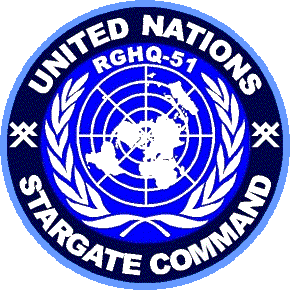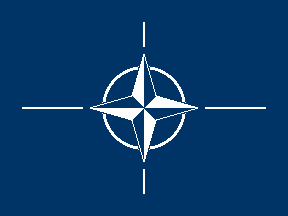| UNRESTRICTED |
|---|
|

|
Radio Voice Procedure
3: NATO Phonetic Code |

| ||||||
|---|---|---|---|---|---|---|---|---|---|

IntroductionDuring verbal, radio, or telephone communications, it is sometimes required to clarify a detail by spelling out a word. However, when either due to a poor signal, or the stress or noise of combat, such messages can become easily garbled, a clearer method of denoting letters and numbers is essential. The standard system used throughout the US and allied military services including the UNMC is the so-called International system formalised and adopted by NATO in 1956. That system is highlighted in column 2 of Table 1 below. Here are some usage examples:
1. Notice that in examples b and c, the number 9 is not said as NINE, but as "NINER". This is because "NINE" is a monosylable and it can get lost in transmission. So it is turned in to a word with two sylables, being always said as "NINER" so as to ensure clarity. 2. In the same two examples, the numbers 3, 4 and 5 are said differently. The expressions "TREE", "FOWER", and "FIFE" are used when reception conditions are very poor. 3. The Proword BREAK is used to verbally express a written separation in text when spelling two or more words, or transmiting groups of numbers. 4. Note that all numbers are expressed individually, and are never compounded. For example the number 123 is said as "ONE TWO THREE" and not as "one hundred and twenty three". Larger groups of numbers are broken down in to two or thre digit blocks, to make them easier to digest. For example the number 1,584 would be said as "ONE, FIVE EIGHT FOUR". The commas within large numbers conveniantly mark the natural break points. Numbers used in co-ordinates should be broken up in to their particular groupings, as in Eastings and Northings, as in our examples. Obsolete & Alternate Systems For Intelligence Analysis UseIncluded in columns 3~6 of the table, purely as reference material for researchers who are studying US military reports pre-dating 1956, such as Operation Highjump, there are several alternative systems. Prior to 1941 each branch of the US services had their own phonetic alphabet which caused a great deal of problems with inter-service communications. Fortunately virtually all the material of that era that can in anyway be considered as relating to the STAR GATE program, came under the durastiction of the US Navy and Marine Corps, and so we have only included those services systems in the table below.In 1941 the Joint Army/Navy or J.A.N. Phonetic Alphabet was adopted for use by all branches, but even then as can be seen in the entries below, it was not totally uniform. Collum 7 carries the system still used by US police and rescue services, which maybe of use to inteligence analysts, for example in respect of the Wako incident. It is recommended that those UNSGC personnel operating with or assigned to any US based organisations, should be fully conversant with this police and rescue system. Table 1: Letters
Table 2: NumbersNine is the only digit that is always said differently, being expressed as "NINER", as "nine" which is monosylabic can get lost in transmission. So it is made in to a word with a double sylable to render it clear. In poor reception conditions the numbers 3, 4 and 5 also can be problematical. So when required there are alternative expressions for each; "TREE", "FOWER" and "FIFE". Fortunately with digital radios these three numbers are less of an issue, but bare it in mind. Be aware that "five" can be confused with the word "fire", for that reason some operators always use "FIFE". However, you should not need to, as you should not be using the word "fire" on air by itself. As previously described in Part 2 earlier, It is common for the word "shoot" to be substituted for the word "fire", leaving the latter for uses like "..MY VEHICLE IS ON FIRE, OUT!" This is especially true amongst former sea-going Marines or Naval personnel, because shouting "fire" while on board ship, may not quite get the expected result. However for ground forces, compounds like "open fire" and "cease fire" or "check your fire" are sufficiently distinct, not to require replacement, or the imposition of "FIFE". NB: if faced with a conflagration, you should cry "Fire!, fire!, fire!", that should get you the correct response. When announciating the numbers, take a little extra time to linger upon them when compared to normal speech. Rapidly sent numbers are easily misheard. If you have a long string of digits to send, break them down in to bite sized groups of 2 and/or 3 digits, depending on which is more conveniant. For example a phone number has eleven digits, and so you may send it thus: 10, 987, 654, 321, which would be sent on a radio network as: "FIGURES, ONE ZERO, NINER EIGHT SEVEN, SIX FIVE FOUR, THREE TWO ONE, OVER" TQ576986 is the alpha-numeric grid reference for our base at RGHQ-51, and in por conditions it would be broken up and sent as follows: "GRID, TANGO QUEBEC, FIFE SEVEN SIX, NINER EIGHT SIX, OVER"
Footnotes1. These alternate expressions are used when reception conditions are very poor, making readability difficult.2. The number 9 is always expressed as "NINER", and never as "nie". End of Document
| ||||||||||||||||||||||||||||||||||||||||||||||||||||||||||||||||||||||||||||||||||||||||||||||||||||||||||||||||||||||||||||||||||||||||||||||||||||||||||||||||||||||||||||||||||||||||||||||||||||||||||||||||||||||||||||||||
| Top |
|---|
| UNRESTRICTED |
|---|